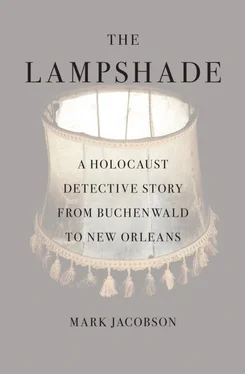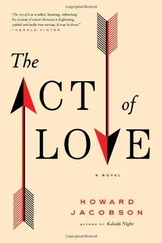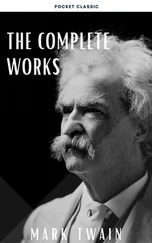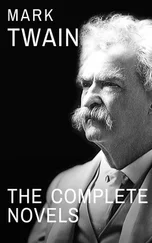This could not be ignored. “Take that back!” was the only acceptable response, and when it was not, there’d be no choice but to start swinging. It was crazy, because back then, at age ten, none of us knew exactly what we were fighting about, except that the lampshade had something to do with what the Nazis had done to the Jews—or more important in the universe of training-wheel machismo, something the pussy Jews had let the Nazis do to them, a really terrible, unspeakable thing.
In America, the story of the Nazi lampshade peaked following the 1948 commutation of Ilse Koch’s sentence by General Lucius Clay, then military governor of the U.S. Occupation Zone in Germany. Stating “the evidence just wasn’t there,” Clay, accepting the recommendation of his staff, reduced the life sentence Frau Koch had been given at the Dachau trials to a mere four years, with credit for time served.
Stateside, reaction to the prospect of the skin-flaying, lampshade-making Bitch of Buchenwald walking free was instant and loud. New York congressman Emanuel Celler attacked Clay’s decision as “an outrage… This woman has been responsible for the making of hundreds of innocent people into lampshades.” The sentiment was echoed in the press and the fledgling television industry. Ed Sullivan, still on the Broadway beat for the New York Daily News in the early days of his Sunday-night variety show, wrote, “Maybe our Army has revised the conviction so that Ilse Koch can get back into the lampshade business again.” Dorothy Fuldheim, a popular news figure of the time and the first anchorwoman to appear on television, expressed a common opinion, saying, “If Ilse Koch is not guilty, then Himmler and Hitler are also not guilty!”
The protest crossed political lines. Woody Guthrie, whose guitar bore the legend “This machine kills fascists,” wrote a song called “Lucius Clay and Ilsa [ sic ] Koch.” The lyrics were sung from the point of view of a camp prisoner. “I’m here in Buchenwald, my number’s on my skin,” Guthrie sings, describing the horror of the bodies being dumped in piles, the SS officers cracking their skulls and stealing the gold teeth from their mouths. Telling of “lampshades made from skins,” Guthrie goes on, ending by saying the “stink is killing me” because “old Ilsy Koch was jailed/Old Ilsy Koch went free.”
With Walter Winchell, then the most powerful newsman in the country (and a strange bedfellow for Woody Guthrie), attacking Clay’s decision and demanding to know “What kind of friend does Frau Koch have in the Berlin High Command?” the U.S. Congress convened highly publicized hearings chaired by Michigan Senator Homer Ferguson to investigate the matter. Much of the damning testimony from the Dachau trial was read into the record, further cementing the image of Koch as a horseback-riding, lampshade-making Nazi monster. The hearings were front-page news for days. Treading a tenuous path between further embarrassment of the Army, which had just won the war after all, and troublesome possibility of double jeopardy, the Ferguson committee recommended that the fledgling West German government try Frau Koch for “crimes against German nationals,” a category of offense that had not been covered by the Dachau proceedings. Eager to please the Americans at little expense to itself (who was going to come to the aid of someone like Ilse Koch?), the West German government quickly reconvicted the Kommandeuse, who was again given a life sentence.
What he called “that Ilse Koch business” would hound Lucius Clay for years. In 1950, he delivered a speech at New York’s Town Hall and was interrupted by shouts of, “Let’s ask General Clay about Ilse Koch and the human skin.” Clay, who still has a street named for him in Berlin, claimed never to have regretted his decision to commute Ilse Koch’s sentence, saying, “My judgment might be wrong but it fits my conscience.” His comment that the famous Buchenwald lampshades were “absolutely proven” to be made of “goat-skin”—even though there is no record of any proof of this claim—would later become a staple of Holocaust-denier rhetoric.
How much of this history filtered down to our preadolescent brains is difficult to recall, except that I remember one evening sneaking my parents’ copy of Leon Uris’s Exodus, a book found in every Jewish household at the time, in hopes of reading some of the dirty parts my friends had told me about. I never got past the sentence where Uris writes about how “Ilse Koch used the skin of Jews to make lampshades.” That sent me to bed with the covers over my head.
Then again, the 1950s were an odd time to be Jewish in the United States, at least in my family. Culturally we were Jewish, willing to assimilate as long as the seltzer man still brought the Dr. Brown’s Cel-Ray soda to the door. The religious aspect, outside of no Christmas tree, however, remained only a hollow but ensnaring echo of the past. My parents never went to temple, even on the High Holy Days (not riding in a car on Yom Kippur was their single act of atonement); nonetheless I was made to attend Hebrew school three days a week until my bar mitzvah in 1961. Our temple was of the Conservative persuasion, a sensible middle-class path between Unitarian-style Upper West Side Reformists and the long-black-coated ultra-Orthodox. Still, as the temple was relatively new (how we resented their building the rabbi’s house on our best baseball field!) and not well established, many of the instructors were bussed in from more observant Brooklyn neighborhoods.
Rabbi Adler was one of my teachers. Older than the others, with hooded eyes, unkempt beard, and shabby coat, he was a scholar. He’d grown up studying in unheated European yeshivas and did not keep secret his humiliation at being so needy in this foreign land that he was forced to make a living teaching a classroom of faux- goyishe pishers like us. One time my friend Stewie forgot his yarmulke and was wearing a Yankee cap instead. Adler snatched it from Stewie’s head and threw it out the window.
“You!” Rabbi Adler yelled in his nearly impenetrable inflection. “You are not a Jew! None of you are .”
I was afraid of Rabbi Adler, his fright-wig hair and mottled skin no doubt fulfilling many of the anti-Semitic touchstones that had been drilled into my young, unknowing Yid head. Consequently, I wasn’t thrilled one afternoon to find him standing beside me at the next bathroom urinal, specks of food in his scraggly beard, smelling like an old kitchen. Things had not been going well in class. Well aware that I, like most of my doo-wop-regarding, baseball average—memorizing classmates, could not read a word of Hebrew, Adler had been calling me to read from the prayer book. “Ha-ga-la… na…” was all I usually could muster, to his mounting rage.
Rabbi Adler stood there a moment, staring at me. “Mordecai,” he finally said, using my Hebrew name. “Do you have any idea?”
“Excuse me, Rabbi, idea of what?”
Adler did not answer but instead pulled up the sleeve of his black coat to reveal a series of tattooed numbers on his forearm. He stuck the numbers in front of my face and held them there. “Idea of this,” Adler spat before zipping himself up and leaving the bathroom.
That night I mentioned this incident to my father, who to my surprise seemed really angry about it. “He had no business doing that,” my father said, agitated. Previously Dad’s attitude toward my “Jewish education” was that I was to shut up and simply do it, get bar mitzvahed so everyone in the family could come to the party, and that would be that. This was the old man’s basic approach to most parenting issues, in keeping with the standard operating mode of the stoic World War II vet. Arriving in Europe a few days after the Normandy landing, he’d fought with Patton’s Third Army, in the Battle of the Bulge, up and down the Rhine Valley.
Читать дальше












